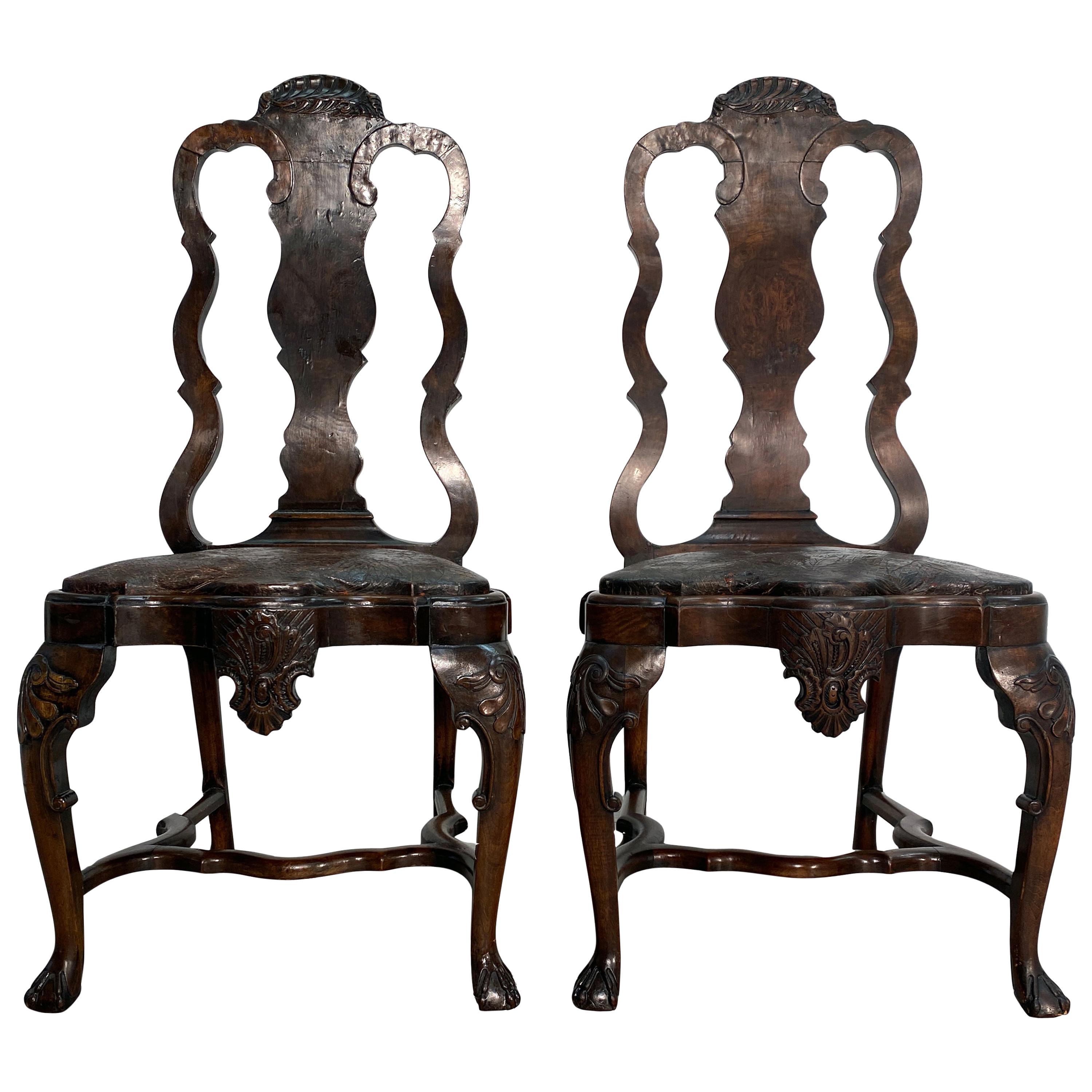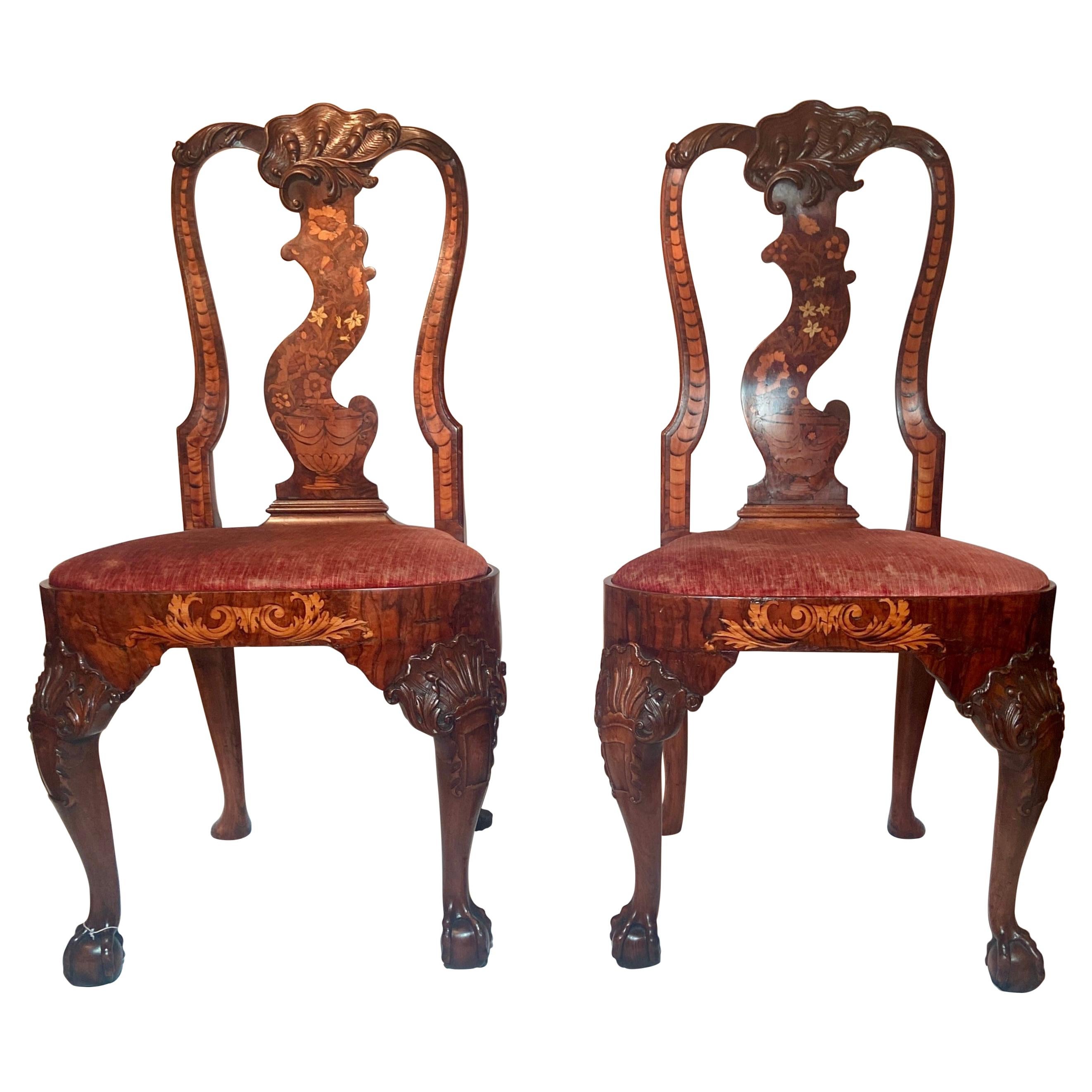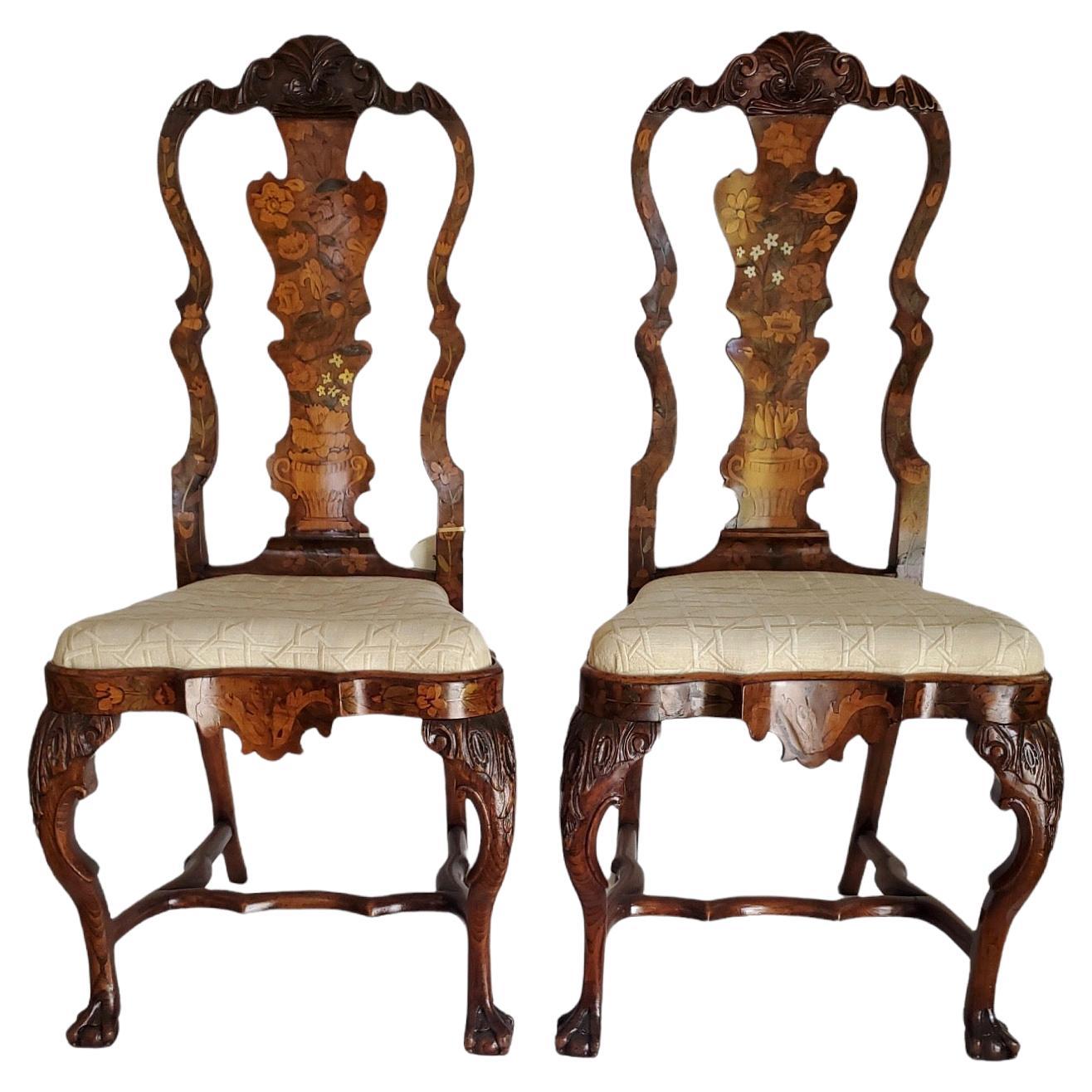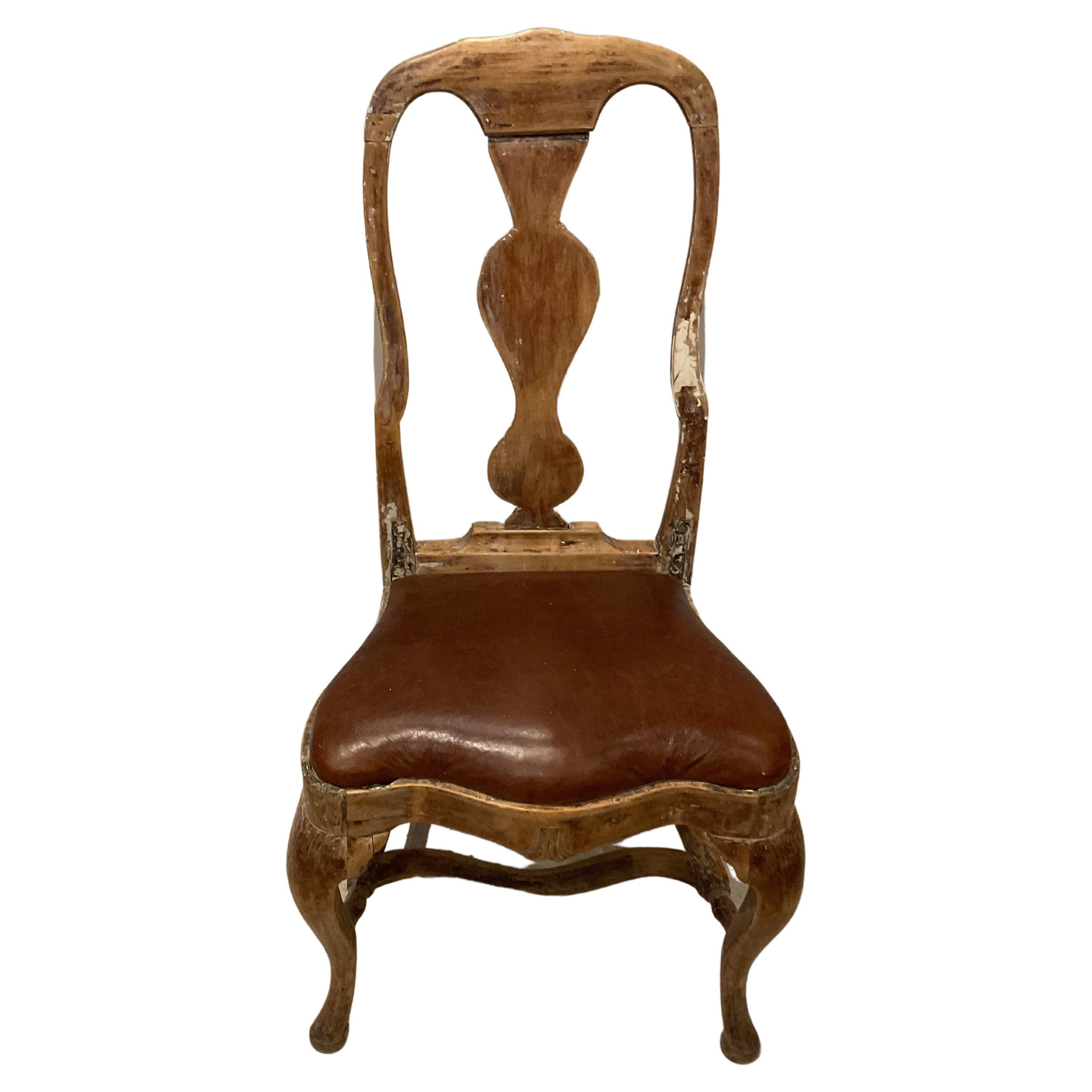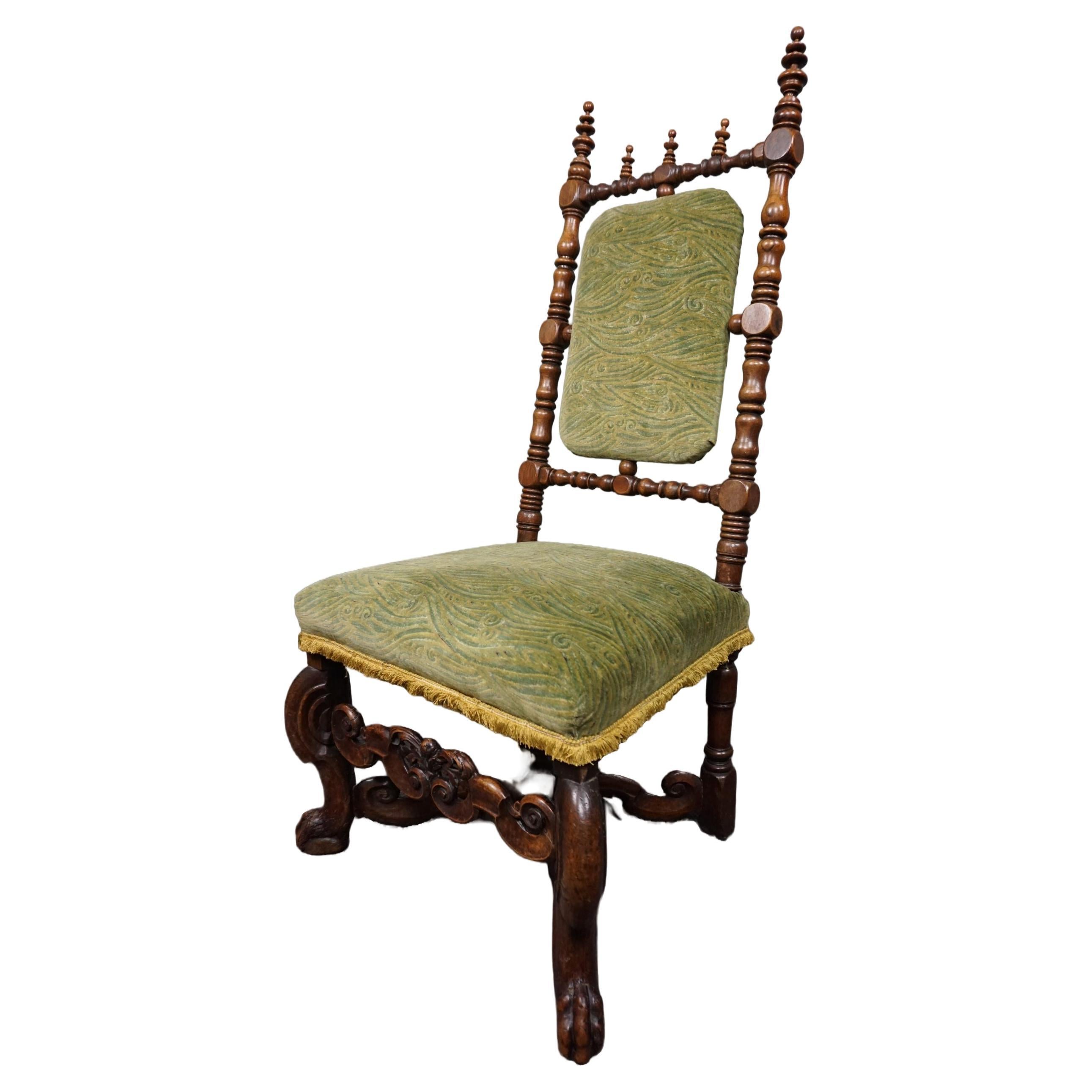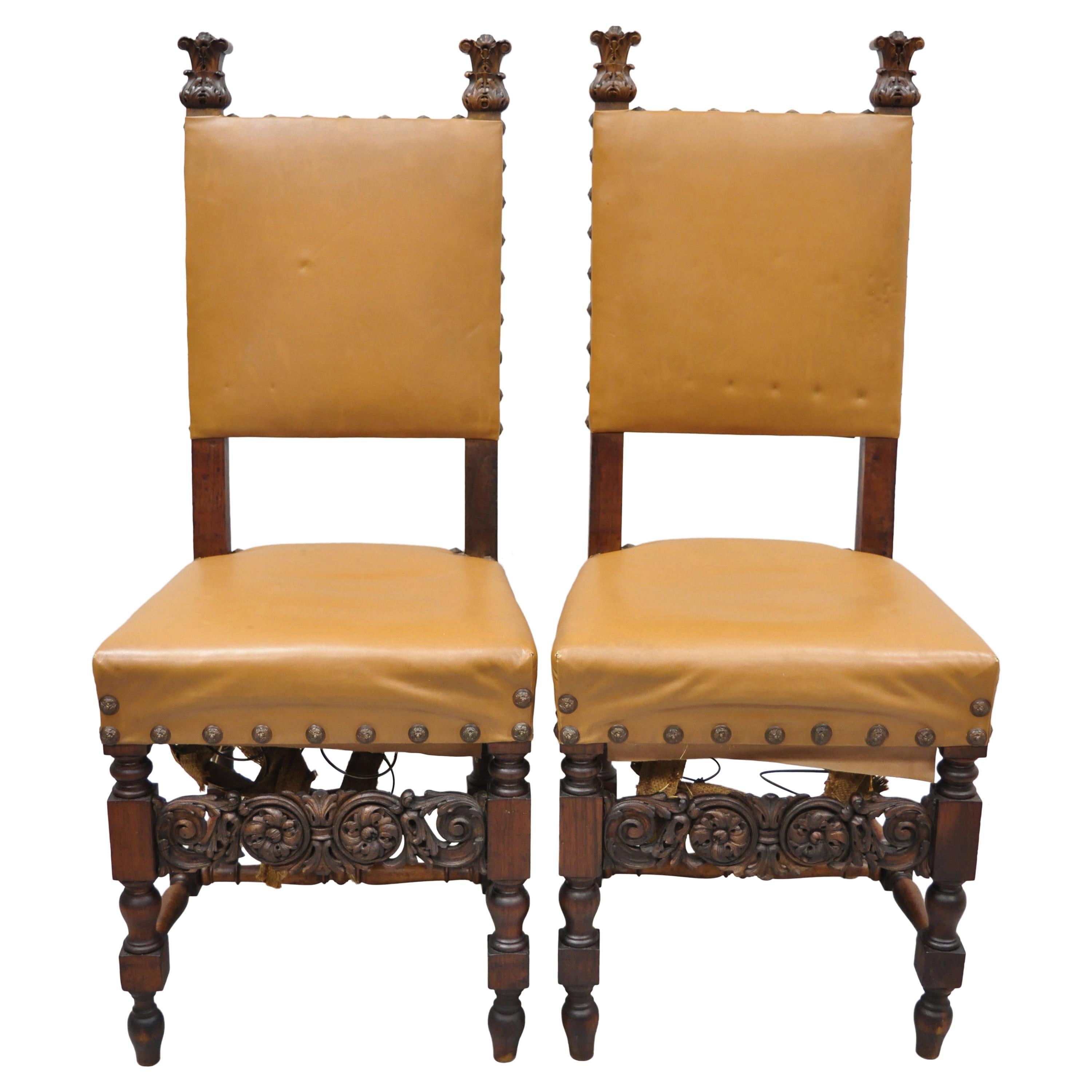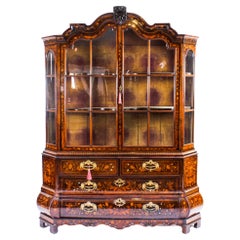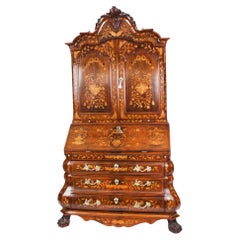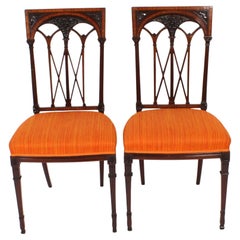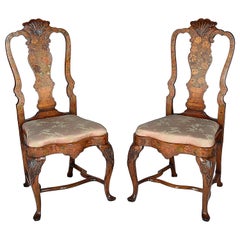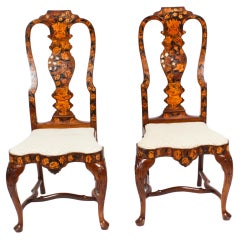
Antique Pair Dutch Marquetry Walnut High Back Side Chairs Late 18th C
View Similar Items
Video Loading
Want more images or videos?
Request additional images or videos from the seller
1 of 20
Antique Pair Dutch Marquetry Walnut High Back Side Chairs Late 18th C
About the Item
- Dimensions:Height: 44.89 in (114 cm)Width: 20.48 in (52 cm)Depth: 21.26 in (54 cm)
- Sold As:Set of 2
- Materials and Techniques:
- Place of Origin:
- Period:1780-1789
- Date of Manufacture:circa 1780
- Condition:
- Seller Location:London, GB
- Reference Number:Seller: A2620b1stDibs: LU950628877952
About the Seller
5.0
Platinum Seller
These expertly vetted sellers are 1stDibs' most experienced sellers and are rated highest by our customers.
Established in 1983
1stDibs seller since 2012
1,205 sales on 1stDibs
Associations
LAPADA - The Association of Arts & Antiques Dealers
More From This SellerView All
- Antique Dutch Marquetry Inlaid Walnut Display Cabinet Vitrine, 18th CLocated in London, GBThis is a beautiful antique late 18th Century Dutch walnut and marquetry inlaid display cabinet dating from circa 1780. The cabinet is superbly inlaid all over with the most wonder...Category
Antique 1780s Dutch Cabinets
MaterialsWalnut
- Antique Walnut Dutch Marquetry Bureau Cabinet Bookcase 18th CenturyLocated in London, GBThis is an important antique Dutch walnut and marquetry bureau bookcase, circa 1780 in date. It has been made from the finest burr walnut w...Category
Antique 1780s Dutch Bookcases
MaterialsWalnut
- Antique Pair Sheraton Revival Side Chairs Early 20th CenturyLocated in London, GBA superb and striking pair of Sheraton Revival mahogany and satinwood banded chairs, Circa 1900 in date. The high back chairs feature satinwood banding with boxwood and ebonised line inlay and wonderful foliate carved decoration. The square tops are supported by a pair of ionic columns which frame rails above criss-cross splats. The overstuffed golden upholstered seats are above satinwood banded seat rails and the chairs are raised on reeded taping legs that terminate in decoratively carved spade feet. It is rare to find such a perfectly sculpted pair of chairs. THE BOTANICAL NAME FOR THE MAHOGANY THESE CHAIRS ARE MADE OF IS SWIETENIA MACROPHYLLA AND THIS TYPE OF MAHOGANY IS NOT SUBJECT TO CITES REGULATION. Condition: In excellent condition having been cleaned, polished, and waxed in our workshops. Please see photos for confirmation. Dimensions in cm: Height 96 x Width 47 x Depth 49 - Chairs Dimensions in inches: Height 3 foot, 2 inches x Width 1 foot, 6 inches x Depth 1 foot, 7 inches - Chairs Thomas Sheraton (1751 - 1806) was an English cabinetmaker and one of the leading exponents of Neoclassicism. Sheraton gave his name to a style of furniture characterised by a feminine refinement of late Georgian styles and became the most powerful source of inspiration behind the furniture of the late 18th century. His four-part Cabinet-Maker and Upholsterers’ Drawing Book greatly influenced English and American design. Sheraton was apprenticed to a cabinetmaker, but he became better known as an inventor, artist, mystic, and religious controversialist. Initially he wrote on theological subjects, describing himself as a “mechanic, one who never had the advantage of collegiate or academical education.” He settled in London c. 1790, and his trade card gave his address as Wardour Street, Soho. Supporting himself mainly as an author, Sheraton wrote Drawing Book (1791), the first part of which is devoted to somewhat naive, verbose dissertations on perspective, architecture, and geometry and the second part, on which his reputation is certainly based, is filled with plates that are admirable in draftsmanship, form, and proportion. In 1803 Sheraton, who had been ordained a Baptist minister in 1800, published his Cabinet Dictionary (with plates), containing An Explanation of All Terms Used in the Cabinet, Chair and Upholstery Branches with Dictionary for Varnishing, Polishing and Gilding. Some of the designs in this work, venturing well into the Regency style, are markedly unconventional. That he was a fashionable cabinetmaker is remarkable, for he was poor, his home of necessity half shop. It cannot be presumed that he was the maker of those examples even closely resembling his plates. Although Sheraton undoubtedly borrowed from other cabinetmakers, most of the plates in his early publications are supposedly his own designs. The term Sheraton has been recklessly bestowed upon vast quantities of late 18th-century painted and inlaid satinwood furniture...Category
Antique Early 1900s Sheraton Side Chairs
MaterialsMahogany, Satinwood
- 18th Century Dutch Burr Walnut Floral Marquetry BureauLocated in London, GBThis is a wonderful antique late 18th century Dutch burr walnut and marquetry bombe' bureau. It has been accomplished in burr walnut, with exquisite hand cut floral marquetry typica...Category
Antique 1780s Dutch Secretaires
MaterialsWalnut
- 18th Century Dutch Marquetry Walnut Cabinet on ChestLocated in London, GBThis is a superb antique Dutch marquetry walnut cabinet on chest, circa 1780 in date. It has been accomplished in walnut with exquisite hand-cut walnut, boxwood and fruitwood floral...Category
Antique 1780s Dutch Commodes and Chests of Drawers
MaterialsWalnut
- Antique Italian Lombardy Marquetry Hall Bench Settle Late 18th CenturyLocated in London, GBThis is a wonderful antique Italian Renaissance Revival walnut, specimen wood and marquetry decorated cassapanca or hall bench, made in Lombardy Italy and Circa 1780 in date. It is smothered in the most wonderful carved panels with fabulous inlaid marquetry decoration with fruit wood and bone inlaid marquetry panels depicting communal and hunting scenes. It has a hinged seat allowing access to the storage box below, and is raised on wonderful scroll feet Condition: In excellent original condition having only been cleaned and waxed in our workshops, please see photos for confirmation. Dimensions in cm: Height 115 x Width 155 x Depth 60 Dimensions in inches: Height 3 foot, 9 inches x Width 5 feet, 1 inch x Depth 2 feet Marquetry is decorative artistry where pieces of material (such as wood, pewter or brass silver) of different colours are inserted into surface wood veneer to form intricate patterns such as scrolls or flowers. The technique of veneered marquetry had its inspiration in 16th century Florence. Marquetry elaborated upon Florentine techniques of inlaying solid marble slabs with designs formed of fitted marbles, jaspers and semi-precious stones. This work, called opere di commessi, has medieval parallels in Central Italian "Cosmati"-work of inlaid marble floors, altars and columns. The technique is known in English as pietra dura, for the "hardstones" used: onyx, jasper, cornelian, lapis lazuli and colored marbles. In Florence, the Chapel of the Medici at San Lorenzo is completely covered in a colored marble facing using this demanding jig-sawn technique. Techniques of wood marquetry were developed in Antwerp and other Flemish centers of luxury cabinet-making during the early 16th century. The craft was imported full-blown to France after the mid-seventeenth century, to create furniture of unprecedented luxury being made at the royal manufactory of the Gobelins, charged with providing furnishings to decorate Versailles and the other royal residences of Louis XIV. Early masters of French marquetry were the Fleming Pierre Golle and his son-in-law, André-Charles Boulle, who founded a dynasty of royal and Parisian cabinet...Category
Antique 1780s Italian Benches
MaterialsWalnut
You May Also Like
- Pair of 18th Century Dutch Marquetry Side ChairsLocated in Brighton, SussexA very good quality pair of 18th century Dutch marquetry side chairs, each with carved shell and leaf like decoration, inlaid ...Category
Antique 18th Century Dutch Side Chairs
MaterialsWalnut
$4,854 / set - Pair of 18th Century Dutch Walnut Side ChairsLocated in Nashville, TNWonderful pair of heavily carved 18th century Dutch side chairs. Both chairs have shell carvings in the crest rails. The knees are carved with Rococo themed acanthus patterns, roundi...Category
Antique Mid-18th Century Dutch George II Side Chairs
MaterialsWalnut
$3,188 Sale Price / set24% Off - Pair of Dutch 18th Century Walnut Side Chairs with Marquetry Inlay & Pad FeetLocated in Atlanta, GAPair of Dutch 18th Century Walnut Side Chairs with Marquetry Inlay & Pad FeetCategory
Antique 18th Century Dutch Side Chairs
MaterialsWalnut
- Pair Antique 18th Century Dutch Marquetry Queen Anne Side Chairs Circa 1710-1730Located in New Orleans, LAPair Antique 18th century Dutch Marquetry Inlay Queen Anne side chairs, Circa 1710-1730.Category
Antique Early 18th Century Dutch Side Chairs
MaterialsWood
- 18th Century Dutch Inlaid Walnut Side ChairsLocated in Los Angeles, CA18th Century Dutch inlaid side chairs. Strong and sturdy, but delicate with different exotic inlaid woods. Ball and claw foot motif. Back...Category
Antique 18th Century Danish Neoclassical Side Chairs
MaterialsWood
$4,950 / set - Late 18th Century High Backed Swedish Chair with Leather SeatLocated in London, GBC18th Swedish rococo chair with leather seat. A handsome single high backed chair circa 1760 which has a simple understated well-worn patina and a leathe...Category
Antique 18th Century Swedish Rococo Side Chairs
MaterialsWood, Leather
Recently Viewed
View AllMore Ways To Browse
Pair French Side Cabinets
Dutch Furniture Maker
Dutch Walnut
Charles Hollander
French Marquetry 18th
Dutch Veneer
Mid Century Office Chair High Back
Fancy Antique Furniture
Antique Brass Dining Chairs
Antique Brass Dining Chair
Holland And Sons Furniture
Antique Chairs 8
Chairs Ball And Claw Feet
Italian Dining Chairs Antique
Late 18th Century Marquetry
Italian Walnut Marquetry
Pair Dutch Chairs
Antique Marble Slab

